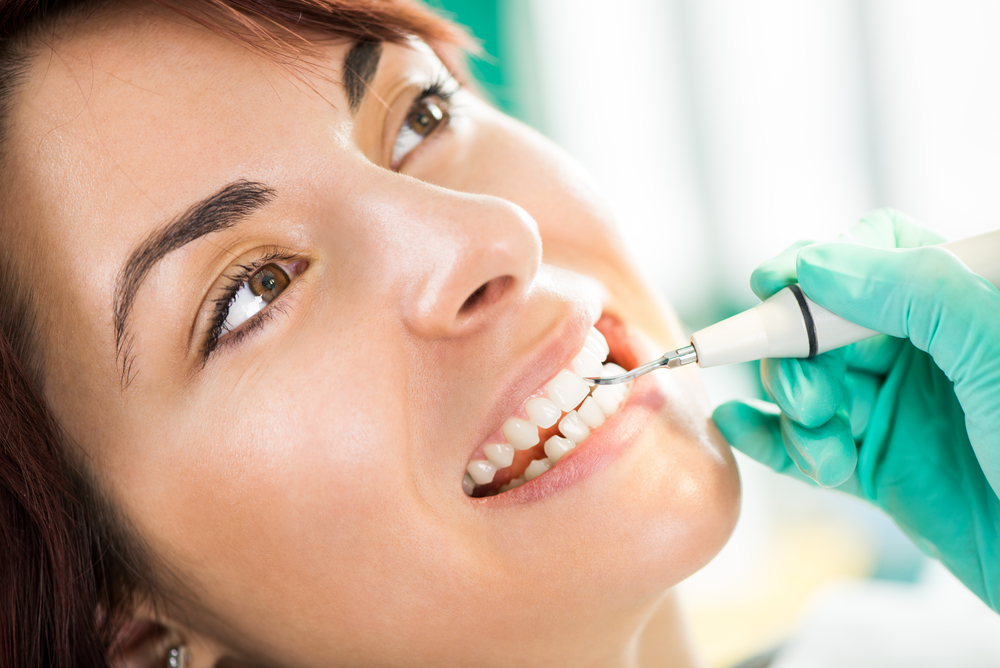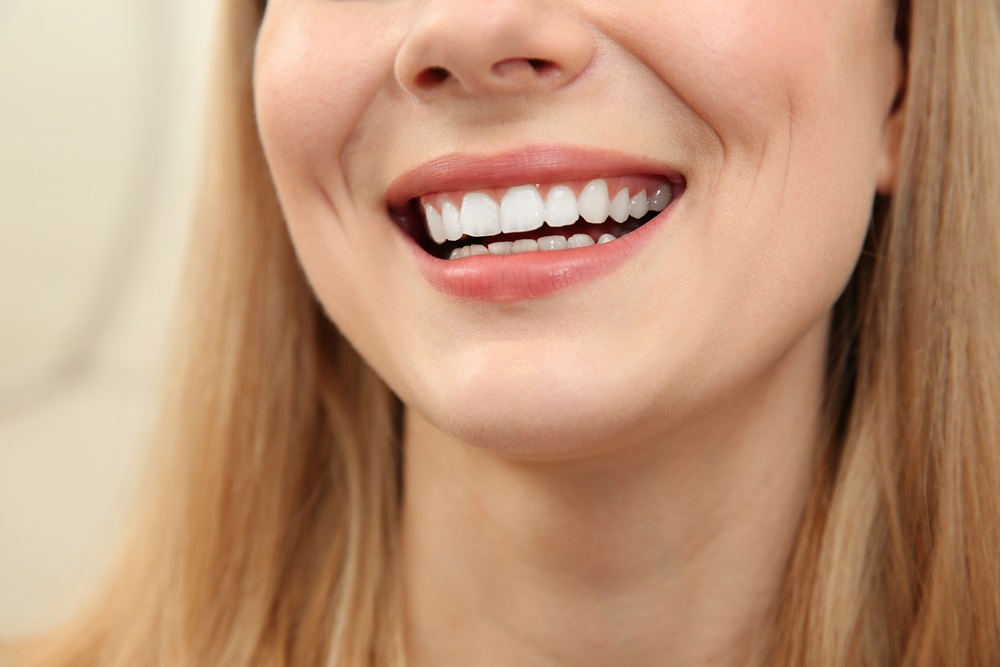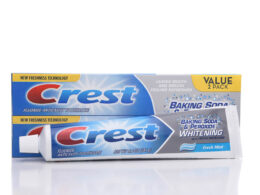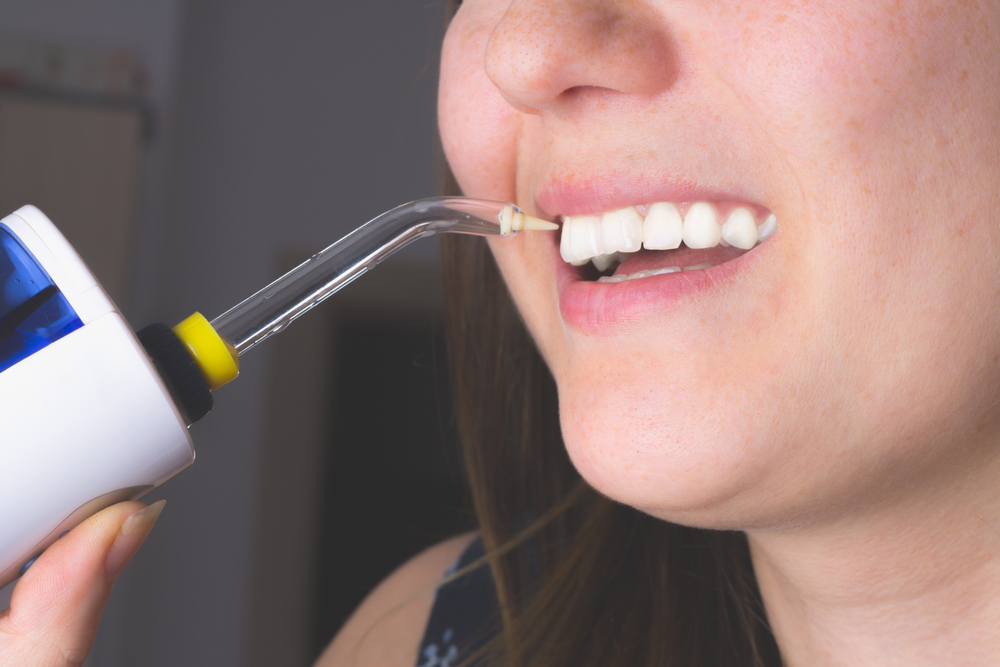- Dental debridement is a procedure that is performed to remove dense deposits of plaque and calcified tartar from above and below the gum line.
- It may be carried out as a preliminary treatment, preparing the teeth for a more refined cleaning.
- Debridement may be necessary if you haven’t visited the dentist for a year or more.
- Debridement can be considered the first step in restoring your oral health.
Maintaining a healthy mouth is vital to both the longevity of your teeth and the beauty of your smile. Bur for some of us, however, upholding good dental hygiene or scheduling regular visits to the dentist can fall by the wayside due to fear of the dentist’s chair, a lack of time, or financial constraints.
Neglecting one’s teeth will cause the buildup of plaque and tartar, which if left uncleaned forms thick, dense deposits. When this happens, debridement is used by dentists to break up and dislodge these deposits.
What Is Dental Debridement?
Even when people regularly brush their teeth, if not performed correctly plaque and calculus can still form — brushing too quickly, using a worn brush, a brush that’s too stiff or too soft, and poor brushing technique all contribute to ongoing buildup. Certain medications, heartburn, and other medical conditions can also precipitate the formation of bacteria or plaque on the teeth.
Plaque is sticky, soft, and composed of bacteria and bacterial by-products. Calculus is calcified tartar — a hard, mineralized deposit formed from plaque and the minerals found in saliva.
Dental debridement is performed to remove these dense deposits of supragingival and subgingival plaque and calculus. A debridement is carried out before a regular check-up or cleaning as a preliminary procedure when the build-up is so thick the dentist can’t accurately check for decay, infection or gingivitis.
Supragingival plaque forms on the margin or above the gums, while subgingival plaque is found below the surface of the gums. Healthy gums adhere to the tooth and the root.
The presence of calculus and plaque is problematic because it signifies there’s space between the tooth and gum, which can lead to bleeding gums, bad breath, changes in taste, gum recession, and in severe cases, bone loss due to inflammation.
Debridement can require the use of a range of dental tools, depending on the extent of the plaque and calculus build-up. Intensive debridement requires a special electronic tool that uses ultrasonic vibrations.
A dentist or dental hygienist will use the ultrasonic device to first dislodge calculus and the plaque attached to it, then shift to a fine scaling tool to perform more subtle debridement at or below the gum line for optimal cleaning.
How Does Dental Debridement Differ from Cleaning?
Both cleaning and debridement share the objective of good oral health. However, as Houston-based dentist Dr. Ronald Konig explains, “it’s very important to note that a debridement is not the same as a regular cleaning, but usually a preliminary adjunct treatment when heavy plaque and calculus are present.”
Plaque buildup both above and below the gumline indicates that you might benefit from dental debridement before cleaning. “Generally speaking, if your gums bleed, it’s indicative of disease,” explains Buffalo-based dentist Dr. Larry Evola.
Dental debridement
- Removes dense deposits of plaque and calculus from the teeth
- Removes plaque both above and below the gum line
- May be necessary if you haven’t visited the dentist for a year or more
- Is performed to remove build-up hindering a dentists ability to conduct a thorough oral examination
- Is performed as a precursor to regular cleaning (prophylaxis)
- Prepares the teeth for a more refined clean
- May take longer than a regular cleaning
- May be a little more painful than a regular cleaning, causing some tenderness to the gums.
Regular cleaning (prophylaxis)
- Usually takes place every six months to maintain a healthy mouth
- Is appropriate when no heavy deposits of plaque or calculus are present
- Removes plaque, tartar and stains from the teeth
- Is generally confined to below the gumline.
Your dental hygienist or dentist will examine the health of your gums to determine whether a standard cleaning or a deeper, full mouth debridement is more appropriate for you.
Individuals who meticulously care for their teeth by brushing and flossing regularly with a recommended toothbrush are less likely to need debridement and more likely to benefit from cleaning and fine scaling. Ideally, with regular cleanings and proper daily care, hard deposits won’t have a chance to form in the first place, rendering debridement unnecessary.
What Happens During Dental Debridement?
During your appointment, your dentist or dental hygienist will apply a topical anesthetic should you have very sensitive teeth or if they feel it’s necessary.
Many periodontal experts agree that the best results are achieved by combining ultrasonic scalers and hand-held instruments. The high vibrational energy of the scaler crushes and dislodges calculus, and creates shockwaves that disrupt bacterial cells.
Irrigation is also used to flush and cool the root surface of the tooth with water. Handheld scalers are then used to perform fine scaling. As bacteria are more likely to attach to rough areas such as the root, the root surface of the tooth is thoroughly cleaned in a process called root debridement. This removes any lingering calculus or contaminated cementum on the root, leaving it less susceptible to bacteria.
In some cases, two and possibly more visits may be needed to complete the root debridement.
When Is It Necessary?
According to Dr. Konig, debridement if essential when dense deposits prevent the dentist from obtaining a proper diagnosis and examination of the teeth and gums.
“Many times after debridement, other issues are uncovered,” says Konig. Debridement enables the dentist to probe the gum line more thoroughly to check for periodontal disease and ensure the bone is healthy.
Clinical research highlights the link between oral health and systemic disorders. Heavy deposits on the teeth are not only detrimental to dental and oral health, but to one’s overall well-being. Poor teeth or gum health can increase the risk of heart disease. Studies have shown that people with chronic gum disease have increased thickness of their neck blood vessels.
“Debridement is often necessary to jump-start the immune system, remove deposits above the gum line and get the process of healing started” explains Dr. Mark Duncan, a dentist based in the Austin area. “It’s the first step in a series of therapy sessions designed to get the gum tissues healthy.”
Is Dental Debridement Painful?
Nowadays, dental debridement is a relatively comfortable procedure. The most progressive dental offices today use a combination of different devices and technologies such as hand instruments, micro-ultrasonics and irrigation to access and scrape deposits of plaque and calculus, destroying bacteria.
“This approach is significantly more comfortable than the periodontal surgery and grafting that was so common 15 or 20 years ago” says Duncan.
In most cases, a dental debridement can be performed without anesthetic. Skilled dental hygienists can generally perform the procedure with no pain. However, patients can opt for a topical anesthetic if they feel it will be more comfortable. Following debridement the teeth and gum line will no longer be covered by tartar or calculus, and could be slightly more sensitive to hot and cold temperatures at first, as well as a little tender.
Some bleeding and soreness may continue for a day or two, as the gum takes time to re-adhere to the tooth following the removal of calculus. Warm salt water rinses or mouthwash, correct brushing technique and pain medication will help decrease these postoperative symptoms.
How Much Does Dental Debridement Cost?
According to Dr. Evola, the cost of dental debridement varies. “Costs vary by the region of the country you’re in. The price could range from $150 to $250.”
There are other factors that may also influence the cost of debridement, such as the hardness or calcification of the deposits, and the difficulty of the case. In general, debridement costs more than a standard dental cleaning because it’s more difficult and time-consuming.
Many dental insurance plans provide full coverage for biannual teeth cleaning as a preventative measure. However, debridement is categorized by some dental insurance providers as a different service, and the same level of coverage may not be provided.
If you have dental insurance it’s possible your insurer will contribute to a portion of the cost of a debridement, leaving you responsible for paying the deductibles. If you do have dental insurance, verify with your provider what portion of your treatment would be covered.
How Should You Care for the Teeth Following Debridement?
After a dental debridement, your hygienist will educate you on how to properly care for your teeth at home. Brushing twice a day (using a correct technique) and flossing will help maintain a beautiful healthy mouth. Some dentists will prescribe a mouthwash containing an antibacterial agent such as chlorhexidine to help heal the gums if there was any inflammation.
You may be asked to return in four to six weeks. This will give the gums time to heal and you’ll also be able to begin implementing good oral hygiene practices.
A follow-up appointment will allow the dentist to make a thorough diagnosis and treatment recommendations. As Dr. Duncan explains, “A lack of proper care for whatever reason allows bacterial infections to linger and destroy the bone that supports and protects your teeth.” Proper dental care should mean future debridements won’t be necessary, and the likelihood of gum disease or infection minimized.
Final Thoughts: The Benefits of Debridement
A debridement represents a positive first step on the path to improving the health of your teeth and gums if they’ve been neglected. It will significantly improve your overall dental health, which has beneficial effects to your comprehensive health in general.
With the advances in dental technology and in the hands of an experienced dentist or hygienist, the procedure will be relatively quick and painless. Not only will your teeth look and feel smoother and cleaner, your mouth will be significantly healthier.









